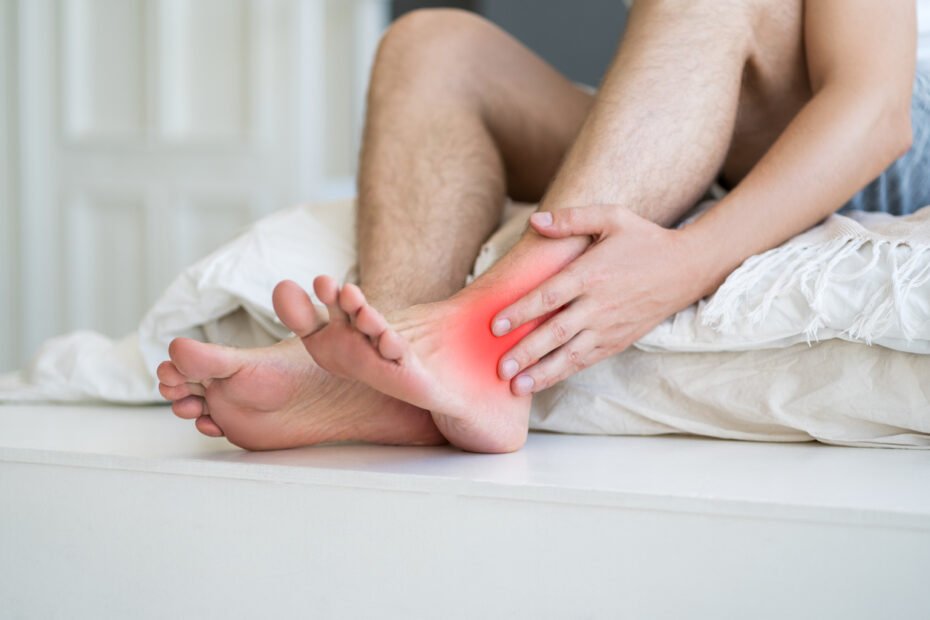Are you experiencing pain in your achilles tendon or plantar fascia? These conditions can be quite debilitating and affect your daily life. Understanding the anatomy and symptoms of these conditions is crucial to getting the right treatment. In this blog, we will delve into the causes of Achilles tendon pain and plantar fasciitis, how they are related, and how to identify them. We will also cover different treatment options available for both conditions, including effective remedies to alleviate the pain. Lastly, we will discuss physiotherapy as a potential solution for treating and preventing Achilles tendonitis and plantar fasciitis from worsening. So read on to learn more about these common conditions that affect many individuals.
Understanding Achilles Tendon Pain and Plantar Fasciitis
The Achilles tendon, the body’s largest tendon, links the calf muscles to the heel bone. Meanwhile, the plantar fascia, a connective tissue supporting the foot arch, can become inflamed, leading to plantar fasciitis. Both conditions often stem from overuse injuries and are major contributors to foot pain. Understanding the anatomy and common causes of heel pain is crucial in sports medicine for diagnosing and treating these ailments. Complications may arise without proper treatment and care.
Anatomy of Achilles Tendon and Plantar Fascia
The insertion of the Achilles tendon onto the back of the heel is a common site of discomfort and pain. Similarly, the plantar fascia inserts into the bottom of the heel, playing a crucial role in the first steps taken during the day. Diagnosis of inflammation and injuries in the Achilles tendon and plantar fascia often involves ultrasound imaging and MRI. These imaging techniques are essential for identifying and understanding the anatomy and any complications associated with these conditions.

How these Conditions Relate to Each Other
Achilles pain and plantar fasciitis often coexist due to tightness and swelling in the calf and foot. Both conditions necessitate conservative measures, including rest, stretching, and supportive shoes. Additionally, they share similarities in the duration of exercise that can trigger pain and stiffness. Understanding the relationship between these conditions is crucial for effective diagnosis and treatment in sports medicine.
Symptoms and Diagnosis of Achilles Tendon Pain and Plantar Fasciitis
Sharp and severe pain is often felt in the Achilles tendon with activity and in the morning. Conversely, plantar fasciitis pain is most prevalent during the initial steps of the day and may ease with mild activity. Diagnosis involves utilizing ultrasound and a systematic review to identify inflammation and insertion issues in the Achilles tendon and plantar fascia. This aids in determining the appropriate course of treatment.
How to Identify Achilles Tendon Pain
Pain experienced in the Achilles tendon is typically felt at the back of the heel and may be accompanied by swelling and stiffness. Utilizing night splints can aid in alleviating discomfort and pain in the Achilles tendon and calf muscle. It’s important to note that the insertion of the Achilles tendon and stress fractures can lead to sharp pain and discomfort in the heel bone.
How to Recognize Plantar Fasciitis
Plantar fasciitis often manifests as pain in the bottom of the foot, particularly in the heel and arch. This discomfort is due to the inflammation and insertion of the plantar fascia. To identify plantar fasciitis, note the common symptoms and seek medical advice. Treatment options include physical therapy, the use of supportive shoes, and orthotics, especially for those involved in sports medicine.
Treatment Options for Achilles Tendon Pain and Plantar Fasciitis
Conservative measures, such as stretching, massage, and orthotics, are commonly employed to alleviate discomfort in the Achilles tendon and plantar fascia. Extracorporeal shock wave therapy and ultrasound imaging can assist in the treatment of both conditions. Injections and shockwave therapy have proven effective for the inflammation of the Achilles tendon and the plantar fascia.
Effective Treatments for Achilles Tendon Pain
When addressing Achilles tendon pain, you use conservative measures similar to the above, such as stretching, massage, and orthotics have proven effective for tendinosis and tendinopathy. Additionally, ultrasound imaging and physical therapy play vital roles in diagnosis and rehabilitation. Night splints and ibuprofen provide relief for both Achilles pain and plantar fasciitis discomfort. These treatments contribute to the overall management and healing process of these conditions, ensuring a holistic approach to recovery.
Successful Remedies for Plantar Fasciitis
Plantar fasciitis and Achilles tendinopathy can be effectively managed using a variety of non-invasive treatment options. Orthotics and supportive shoes offer relief from heel pain, while ultrasound imaging and shockwave therapy provide successful remedies for plantar heel pain and inflammation of the plantar fascia. Additionally, conservative measures like splints and massage can effectively manage pain and stiffness in the arch of the foot and the bottom of the heel. These treatments can play a crucial role in alleviating discomfort and promoting recovery.
How to Prevent these Conditions from Worsening?
To prevent Achilles tendon pain and plantar fasciitis from worsening, it is important to incorporate stretching and calf muscle exercises into your routine. Wearing supportive shoes and orthotics can also help alleviate discomfort. Recognizing early signs of pain is crucial in preventing these conditions from worsening.
Can Physiotherapy Help with Achilles Tendon Pain and Plantar Fasciitis?
Physiotherapy can be beneficial for individuals experiencing Achilles tendon pain and plantar fasciitis. A skilled physiotherapist can evaluate the injury’s severity and create a personalized treatment plan. Treatment may include targeted exercises to enhance strength and flexibility, massage therapy, and stretching techniques. Additionally, physiotherapy can address underlying biomechanical issues to prevent future injuries.

Conclusion
In conclusion, it is important to understand the significance of early diagnosis and treatment for Achilles tendon pain and plantar fasciitis. These conditions can cause significant discomfort and hinder daily activities if left untreated. By recognizing the symptoms and seeking appropriate medical help, you can find relief and prevent further worsening of these conditions. Effective treatments such as physiotherapy, orthotic devices, and stretching exercises can be beneficial in alleviating pain and promoting healing. Additionally, incorporating preventive measures such as proper footwear, regular stretching, and maintaining a healthy weight can help reduce the risk of recurrence. Remember, taking care of your feet is essential for overall well-being and mobility.
I hope you found this blog helpful and please feel free to comment and share.
Thanks for reading!
 | Tracy J. Founder, The heel GP |
